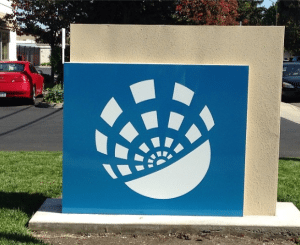Latest News
[Via Satellite 03-21-2014] Skybox Imaging’s decision to use Swedish Space Corporation (SSC) subsidiary ECAPS’ High Performance Green Propellant (HPGP) system on its new satellite fleet marks the first large-scale use of the environmentally friendly HPGP system. HPGP uses Ammonium DiNitrimide (ADN) instead of the corrosive and highly toxic hydrazine.
“The full lifecycle cost of the green propulsion systems is substantially lower than traditional rocket fuels,” Michael Trela, vice president of satellite systems at Skybox, told Via Satellite. “Additionally the environmentally safe green propellant can be easily transported by aircraft and reduces the time to fuel multiple satellites prior to integration on the rocket. The addition of this propulsion module will allow us to maintain our operational orbit for its entire planned 6-plus mission life.”
ECAPS’ HPGP module runs significantly cleaner than typical propellants. Its fuel is non-carcinogenic, nonflammable, and does not react to humidity. These, among other characteristics, mean operators do not have to use Self Contained Atmospheric Protective Ensemble (SCAPE) units, or “bunny suits” for fuelling.
As a relatively new propellant, more steps will be required by unfamiliar launch site organizations before its initial use. Still, the ADN fuel is easy to transport and is expected to reduce safety costs associated with other monopropellant and bipropellant fuels, as well as save time.
“What makes Skybox somewhat unique compared to other more ‘traditional’ satellite designers and manufacturers is that they, being a new player in the industry, were able to do more of a clean sheet trade-off comparison of all the different propulsion technologies available,” said Aaron Dinardi, director, international business development at ECAPS. “As a result, they weren’t biased by any heritage designs or other projects that they’ve previously implemented with another technology.”
Skybox did not include a propulsion system on its first two satellites, SkySat 1 and SkySat 2. The company has worked closely with ECAPS on including the modular propulsion system into SkySat 3, and has since expanded to using the HPGP system on all of its current orders. SSL will integrate the HPGP system into 13 SkySat satellites — SkySat 3 and the subsequent 12 satellites.
“Skybox elected to add [the HPGP] propulsion module to their satellites because it allows them to keep satellites properly phased in an orbital plane and extends the satellite’s life by maintaining the proper altitude,” said Bob Day, vice president of sales and marketing at SSL. “It also allows them to operate at a lower altitude in order to achieve higher resolution imagery.”
Dinardi expects green propellants to grow in market share as new constellations develop. Certain characteristics of the HPGP system make it well-suited for smaller satellites and LEO constellations. Imaging satellites akin to the SkySat fleet need to operate in orbits where they experience increased drag from the Earth’s atmosphere. HPGP has a higher density impulse, meaning it produces more force per unit over time, than mono-propellant hydrazine, giving it the ability to deliver greater thrust and keep satellites in their desired paths.
“We have a 24 percent higher density than hydrazine, and we have on the order of a 6 to 8 percent higher specific impulse,” said Dinardi. “When you combine those together, we end up with a density impulse that’s on the order of about 30 percent more than mono-propellant hydrazine. Being able to get 30 percent more delta-v without having to change either the size of the tank or the overall propulsion system architecture is extremely important for small satellites.”
HPGP has some distinct advantages for small satellites, especially those working in low Earth orbit (LEO). The system helps keep the satellites small without sacrificing maneuverability. This translates to longer lifespans for satellites, and hence less of a need to frequently replenish the constellation. The HPGP system has flight heritage from the PRISMA satellite project led by SSC, but with the addition of Skybox, Dinardi anticipates more satellite designers will show interest.
“I think there is definitely a trend in the market for people moving toward green when and if it’s able to meet their mission requirements,” he said. “The reality is that no individual green propellant will likely be able to replace hydrazine in all of its capacities, so what we will likely end up with is different green solutions that address different niches of the overall capability space that hydrazine has been able to provide over the years.”
Dinardi may be right about the burgeoning desire to use green fuels. Ball Aerospace is also working on a clean fuel with NASA and Aerojet Rocketdyne called the Green Propellant Infusion Mission (GPIM). Ball Aerospace’s mission is not slated to occur until 2015 but in the meantime, environmentally conscious engineers may turn toward HPGP. When asked if they foresee greater use of green space fuels in the future, SSL’s answer was a resounding yes. The company is even looking into future uses with its own projects.
“HPGP provides similar in-orbit performance to other more toxic systems, but with significant ground operations advantages,” said Day. “SSL does not currently use HPGP on other satellites, but we are evaluating it for other missions, including GEO satellites.”
Get the latest Via Satellite news!
Subscribe Now